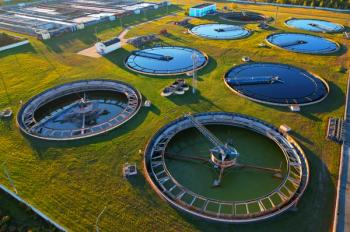
Smaller, Cheaper, Faster, and Smarter Analytical Instrumentation
In the "Smaller Cheaper, Faster, and Smarter Analytical Instrumentation" symposium at Pittcon 2006, arranged and presided over by Vassili Karanassios of the University of Waterloo (Waterloo, Ontario, Canada), the speakers described...
In this symposium at Pittcon 2006, arranged and presided over by Vassili Karanassios of the University of Waterloo (Waterloo, Ontario, Canada), the speakers described miniaturized versions of existing analytical instrumentation and discussed how the smaller versions could be implemented in practical applications.
R. Graham Cooks from Purdue University presented a talk titled "Miniature and Micro Ion Traps and Arrays." He described a program in which miniature and micro ion trap mass spectrometers are being designed, built, and tested. He discussed cylindrical and rectilinear ion traps and simulation procedures and programs for both. A laser polymerization process is used to fabricate the rectilinear ion traps. His group uses both laser stereolithography (for the 100-micrometer range) and silicon fabrication (for the 10-micrometer range). He showed several slides of results from using a handheld tandem mass spectrometer (Mini 10) that has a mass of 10 kg. Applications for the miniature mass spectrometers include proteomics and combinatorial chemistry. He also showed results from multiplexed (EI/CI and ESI) MS-MS instruments. Cooks also discussed desorption electrospray ionization MS as a method for sampling analytes in urine, explosives, pharmaceuticals, drugs on human skin, and phospholipids in cancerous human liver tissue. His laboratory plans to continue reducing the size and weight of the instrument from its current 22 lb to 10 lb.
A presentation by J. Michael Ramsay of the University of North Carolina (Chapel Hill) was titled "Miniaturized/Microfabricated Mass Spectrometry." He discussed a hand-portable mass spectrometer based on a 0.5-mm Paul cylindrical ion trap with a microchannel plate for detecting ions. The unit has a mass of 10 kg and a power consumption of 60 W while scanning and 24 W while in standby with the vacuum pumps running. Potential applications include process control, environmental monitoring, forensics, projectile-mounted remote sensing, metabolism-based diagnostics, and high-throughput laboratory analyses. Current work in his lab includes high-pressure mass spectrometry (∼ 1 torr) using smaller radius ion traps.
"Microfluidics for Sample Preparation and Separation" was the title of a presentation given by Andreas Manz of ISAS-Institute for Analytical Sciences (Dortmund, Germany). He discussed the free-flow separation of biomolecules using isotachophoresis and isoelectric focusing. He concluded with discussion of lipid vesicle formation using a microfabricated membrane-silicon chip device with a fluorescing dye.
In a talk titled "New Techniques for the Simulation of Microanalytical Instrumentation," Andreas Greiner of Freiburg University (Freiburg, Germany) reviewed simulation techniques that recently have been used in the area of micro electromechanical systems, including dissipative particle dynamics and the Lattice Boltzmann method for microfluidic applications and topology optimization for compliant and fluidic microstructures.
Symposium arranger Vassili Karanassios closed the symposium with a discussion of a portable, battery-operated mercury analyzer developed in his laboratory. The analyzer is about the size of a shoe box. It requires no hot source such as a plasma, but instead uses a micromachined gold amalgamation cell with a microfabricated heater. According to Karanassios, the sensitivity of the instrument is comparable to that of a bench-top system. The portable mercury analyzer is controlled by a Palm Pilot with a wireless interface.
Newsletter
Join the global community of analytical scientists who trust LCGC for insights on the latest techniques, trends, and expert solutions in chromatography.





